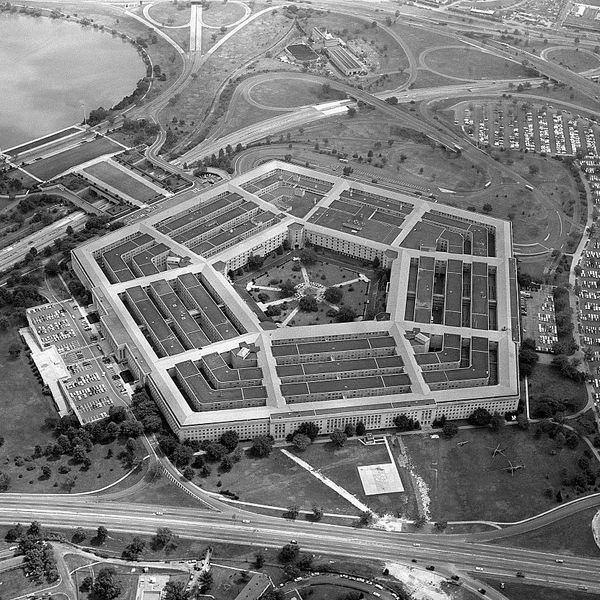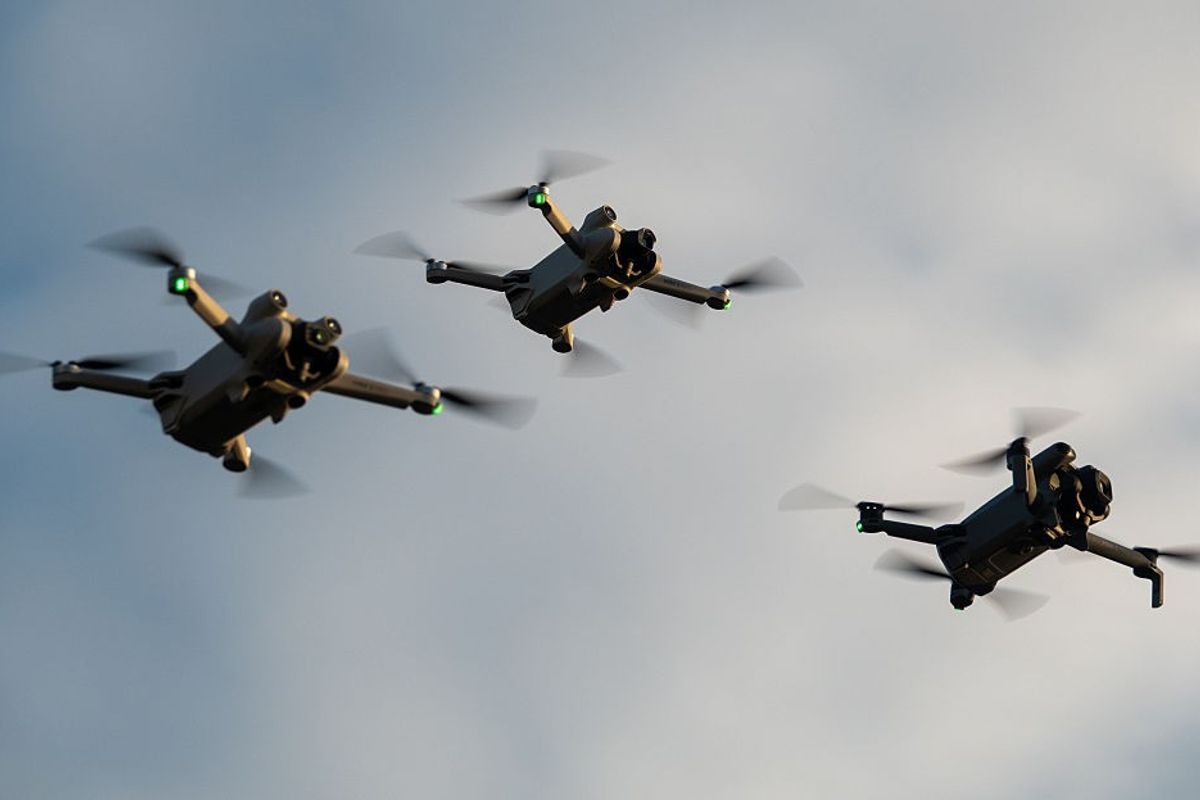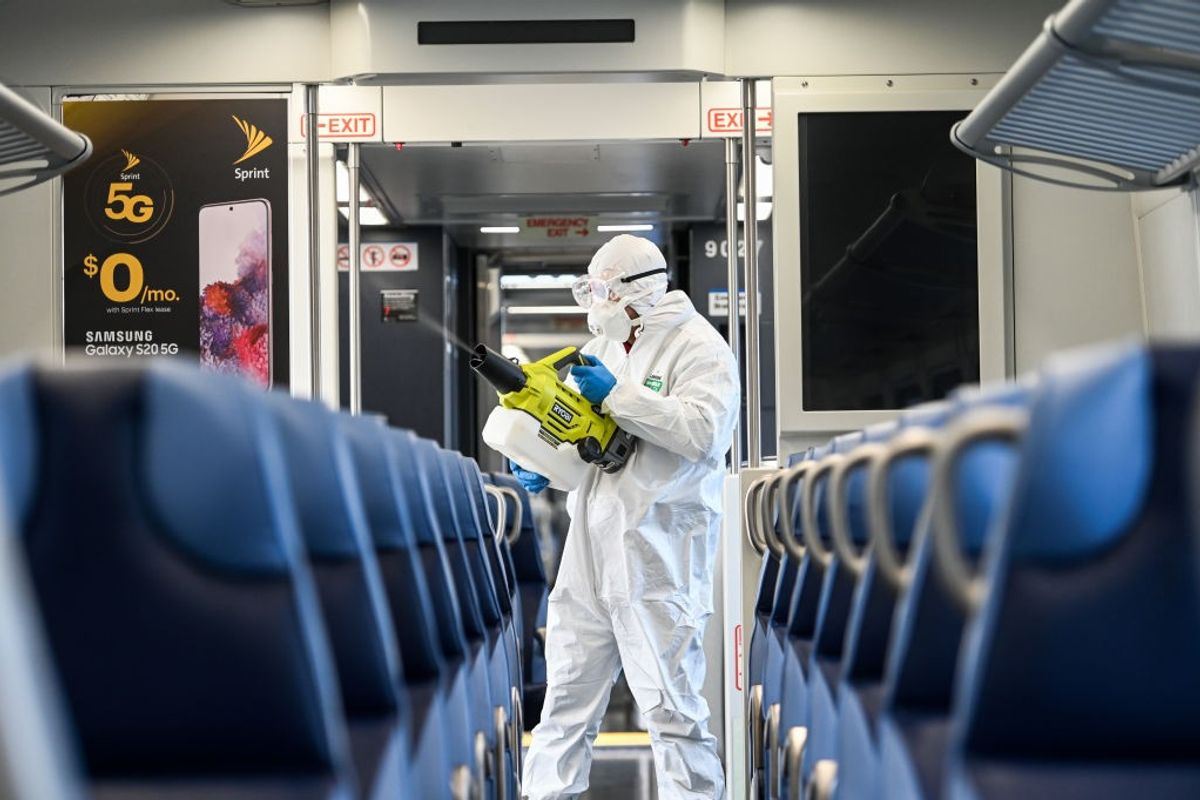Officials from Poland and NATO now say a missile that landed inside of Poland on Tuesday, killing two people looks as if it may have been fired by Ukraine's air defences, instead of a Russian strike, as originally feared. A strike inside of Poland by Russia would have likely constituted a dangerous escalation in the war in Ukraine, with increased NATO involvement.
As The Cipher Brief reported this week in Closing the Gap in U.S. Cruise Missile Defenses, Kyiv is not alone in expressing concern over a lack of air defense systems to counter potential missile strikes. The Biden administration’s recently released Missile Defense Review (MDR) focuses on the cruise missile threat, highlighting heightened risks with the development of hypersonic technology. In addition to regional threats in Europe and the Middle East against US overseas military bases and allies, the MDR also notes threats to the homeland.
The Cipher Brief talked with Thomas Karako, senior fellow with the International Security Program and the director of the Missile Defense Project at the Center for Strategic and International Studies (CSIS) before the missile strike in Poland, about what's on the U.S.' radar today when it comes to Cruise Missile defense. Comments have been edited for length and clarity.
EXPERT Q&A
The Cipher Brief: Where does the US face the most immediate cruise missile threats, and how could this change? The US military has most recently been testing its Iron Dome units, which could potentially serve in some cruise missile defense capacity. Where do you think this system will be deployed?
Karako: The frame of the question reveals a longstanding bias to think about cruise missile threats as something that is a problem “over there,” a regional one. Nevertheless, the cruise missile threat has become far more ubiquitous, and has become global. To be sure, Russian and Chinese cruise missiles have a capability and capacity threat for NATO Europe and likewise our allies and forces in the Indo-Pacific. Even Iranian cruise missiles, and the related threat from unmanned aerial systems (UAS) threat, have become to appear and be used more frequently.
As we’ve seen in Ukraine and attacks in the Middle East, the cruise missile threat has become a global problem. In July this year, the CSIS Missile Defense Project Team released a report titled, “North America is a Region, Too” looking at the cruise missile defense threat to the homeland. While the U.S. Army acquired Iron Dome as an interim capability for low-tier threats, issues with integrating it into the full integrated air and missile defense portfolio seem likely to preclude it for a more durable solution. The Army is pursuing the Indirect Fire Protection Capability (IFPC), which will initially include AIM-9X missiles in a new launcher, for low tier cruise missile and aerial type threats. The development of defense for Guam will be an important test case for fielding cruise missile defenses as part of a comprehensive air and missile defense architecture
As for where the U.S. Army will deploy the Iron Dome batteries it has acquired, that remains to be seen. It seems likely as surge capability to some theater of interest, whether it be Europe or the Indo-Pacific. It is hard not to think that the capable and proven Iron Dome system might be a good contribution to the Ukraine conflict, as well, assuming Israel were to lift its prohibition on such a transfer. Ukrainian President Volodymyr Zelensky has called upon Western nations to continue to support Ukraine in its fight for survival, especially flagging their need for air defenses.
The Cipher Brief: What are the biggest challenges the US faces in developing cruise missile defenses? Is there a lack of developed capabilities, issues with integration or lack of strategy?
Karako: For a low-flying threat like cruise missiles, the biggest problem is the sensor coverage to be able to see it early enough to be able to take action, and even more than that to establish combat identification—which is to say, to verify that an uncooperative aerial object is indeed a threat as opposed to a friendly aircraft—and then the command and control time to decide to indeed intercept it, assuming that is possible.
Typical ground-based sensors limited by the curvature of the earth are likely to be severely impaired, thereby limiting reaction time and the time to decide. In our July report on homeland cruise missile defense, we discussed the importance of over the horizon radars (OTHRs), elevated sensors on towers and aerostats, and other means to improve and extend the detection and warning time, and thereby enhance the time to decide.
Shooting the missiles down, especially subsonic cruise missiles, is relatively easier, if you can see them and develop a track on them. Thus you’ve seen in Ukraine innovative efforts to coordinate detection, including a nationwide app on people’s phones to report aerial threats flying by. And Ukraine has indeed been able to shoot down quite a few Russian cruise missiles, as well as countless drones.
Get your 10-minute national security daily brief with Suzanne Kelly and Brad Christian by signing up for The Cipher Brief’s Open Source Report Daily Newsletter or by listening to The Cipher Brief’s Open Source Report Podcast wherever you listen to podcasts.
The Cipher Brief: As the US works on an enduring cruise missile defense solution, what should it prioritize? Should initial efforts focus on expanding radars, procuring interceptor systems or a combination of steps?
Karako: Naturally all steps of the kill chain have to be considered in tandem. Omitting any one will mean that you may have early warning but no defense, or conversely, a bunch of missiles that are not adequately cued to be useful. The several elements described above are all necessary, but in the near term there are benefits to prioritizing the long-range and over-the-horizon sensing capability and their integration into appropriate command and control. Even if active defenses were not deployed, the sensing and combat identification of a threat contributes to early warning and attribution, and thus enhances our overall deterrence and defense posture.
The good news here is that for as ubiquitous as the cruise missile threat has become, the intercepting itself is not a problem of high technology. The several services already have a number of counter-UAS and cruise missile defense capability for self-defense capability, but the extent of the threat is such that the mission remains under prioritized. As the Ukraine conflict and other recent conflicts have sharply demonstrated, cruise missiles are weapons of choice, and we can expect them to be seen just about everywhere. The Defense of Guam will be an important test case for integrating cruise missile defenses with defenses against ballistic and so-called hypersonic missiles. The present challenge is as much a policy one as anything, figuring out what we intend to defend and against what.
To its credit, the Biden administration’s new Missile Defense Review, released as part of the National Security Strategy, talks repeatedly about the cruise missile defense challenge, both for North America and other regions.
Register for The Cyber Initiatives Group Virtual Winter Summit on December 13 to stay ahead of what’s coming in cyber. Registration is free for this master class in public-private collaboration on cyber issues. Register today.
The Cipher Brief: Has the US been prioritizing ballistic missile defenses over cruise missiles?
Karako: A better formulation might be to say that the United States has been prioritizing active air and missile defenses against rogue states, over those of near peers like Russia and China, and one aspect of that has been that cruise missile defense has been insufficiently prioritized. The past overconfidence in air superiority as a kind of American birthright has now been rightly shaken. Cruise missiles are not the only type of aerial threat, but they are a component of the aerial threat spectrum that is here to stay. Fortunately, subsonic cruise missiles are not the hardest aspect of that spectrum to intercept, and there are a number of programs and interceptors that can be mustered to contend with it—both U.S. made and otherwise, in Europe, and indeed other places. Moreover, the types of sensors, command and control systems, and kinetic and nonkinetic effectors are not and must not be viewed as unitaskers, but rather as part of a multi-mission approach. The approach to cruise missile defense should therefore be with an eye to adjacent mission areas, most notably the approach to countering UASs (C-UAS), other forms of fixed and rotary wing air threats, and even advanced and maneuvering hypersonic threats of the future. In short, C-UAS and CMD have become fundamental parts of the air and missile defense enterprise. Here again, the 2022 Missile Defense Review corrects some of this past inattention, calling out C-UAS and CMD as top priorities.
Read more expert-driven national security insights, perspective and analysis in The Cipher Brief














